First, news: As well as online courses (now full), I’m giving one day-long writing workshop in person this term, in London (UK). I wrote my PhD on fragments and fragmentation in modernist literature, and thought I should make some use of all that research in my creative teaching. So it’s all about collage poems and gathering fragments from the city like T.S. Eliot, Virginia Woolf, Toomer or Mayakovsky.
My substack is free. My books are available here, here, here, and here if you enjoy my writing. I also wrote a poem to John Keats in this anthology by Sidekick Books. <3
On to today’s essay.
“You’re a triplet?” a new friend asked. “Why don’t you write about that?”
I shrugged; aside from a few poems in Dangerous Enough, I’ve not written much about being one of three. Writing about multiple births, when you are one, feels like describing the end of your nose. Twins appear a lot in culture but these depictions often feel remote to me. When we do appear in fiction we tend to be either creepy or comical, like clowns.
In his essay ‘The Uncanny’, Freud argues that ‘persons, […] who are to be considered identical by reason of looking alike’ create uncanny effects, which is why ‘doubles’ often appear in horror. The author might, for example, transfer ‘mental processes from the one person to the other—what we should call telepathy—so that the one possesses knowledge, feeling and experience in common with the other, identifies himself with another person, so that his self becomes confounded, or the foreign self is substituted for his own’. Freud considers this doubling to be an attempt to preserve the self against death, but as the double fails to give any such reassurance, they become disturbing: ‘From having been an assurance of immortality, he [the double] becomes the ghastly harbinger of doom.’1 Okay. Thanks, Freud! Thanks a lot.
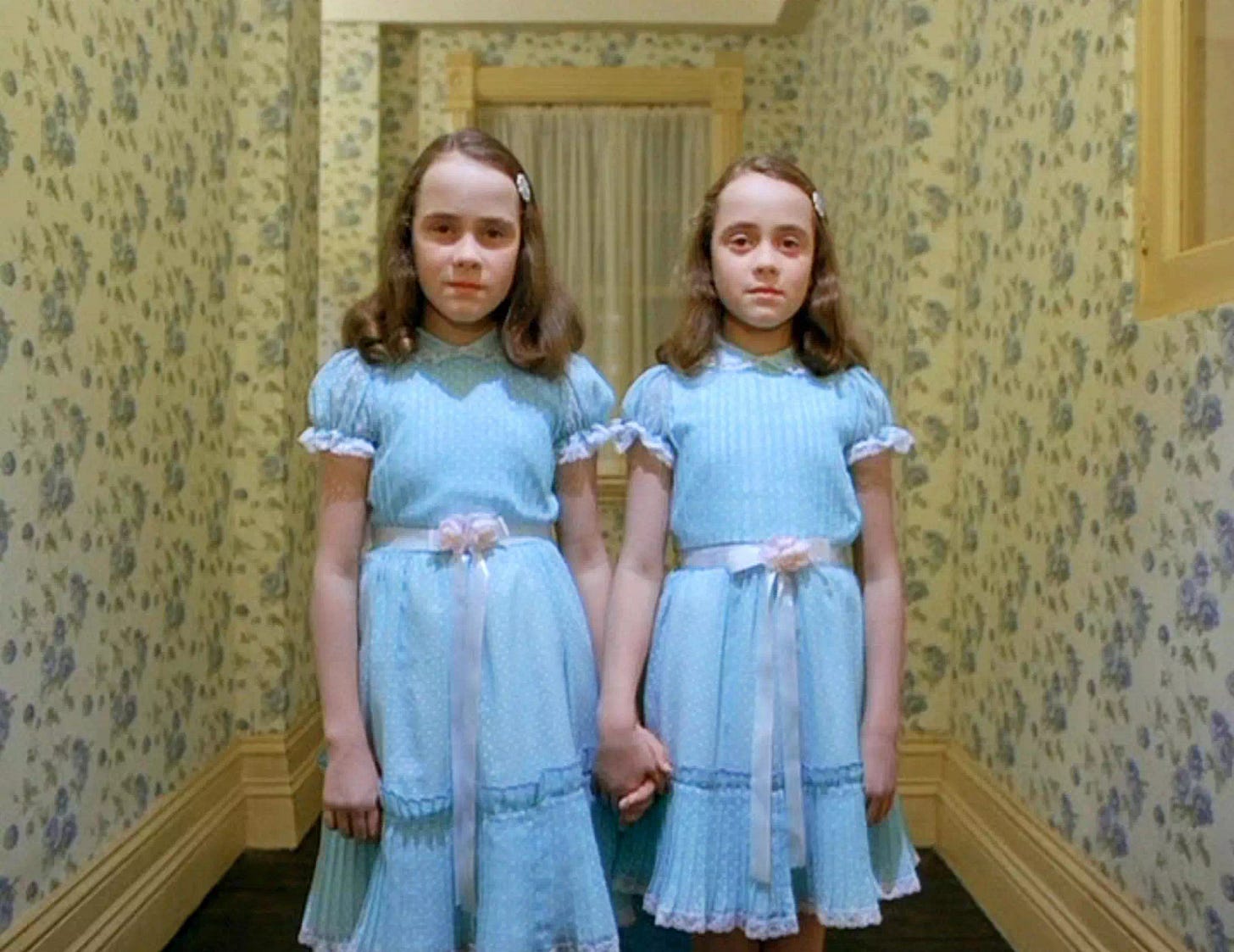
In real twinning, there’s no confounding of self. We know that we’re not the same person. We just look the same. But other people can find us uncanny, and I was sometimes aware of being seen as inhuman, especially in high school, when everyone is their worst self: “Man, I’d hate to be a triplet. It’s like not even being a real person.” “Have you considered a foursome?” A boy approached my first boyfriend at a school dance, yelling “BUT HOW DID YOU CHOOSE? HOW DID YOU CHOOSE WHICH ONE?” as if I was a wall. This probably led to my long-running interest in ‘otherness’, ‘weird’ fiction, and marginal figures, although aside from Nazi experiments, and the murdering of baby twins as ‘bad omens’ under certain superstitions, multiple births are not usually persecuted. I studied Diane Arbus for Art A-level and looked for a long time at her photographs of twins and triplets. She always pictured them dressed the same, but their steady gazes back at the viewer had individual force. “What you notice are the different expressions,” the teacher observed.
Studying literature at university, I found at one English department dinner that all of the students sitting around me were also twins. We were a full table of lone multiples, our siblings elsewhere, saying “wait - you’re a triplet - I’m a twin!” “What, me too!” like “I’m Spartacus” with reproductive flukery. I wondered whether something about our shared childhoods had encouraged an obsessive interest in books, or whether it was just a coincidence.
Multiple life is a sort of real-world lesson in close reading. We all make people up, all the time, based on surface clues and projection. If you’re genetically identical, most people won’t try to tell you apart, but your siblings know you and your differences with a degree of zany familiarity only matched by long marriage, or parenthood (which is also a kind of doubling).
I wanted to be known, but there are some advantages to being hidden inside a group. I could ghost any occasion with zero effect; I didn’t have to say goodbye. If you’re a bit of an introvert (which I am, but my sister Alex isn’t), this is very freeing. Try it without your sisters standing in for you, and people will just think you’re rude.
Overall, tripletdom is a huge gift, like hitting some universal jackpot, even if the first response is “oh my god, your poor mum.” I never feel stronger than I feel around my sisters. The best twin (and more) stories tap into that intimacy. In no particular order, here are some multiple birth depictions that I find interesting or moving.
Viola & Sebastian, Twelfth Night (written/performed c. 1601, published 1623)
VIOLA.
What country, friends, is this?CAPTAIN.
This is Illyria, lady.VIOLA.
And what should I do in Illyria?
My brother he is in Elysium.
Perchance he is not drown’d. What think you, sailors?CAPTAIN.
It is perchance that you yourself were sav’d.VIOLA.
O my poor brother! and so perchance may he be.2
Twins feature in both Twelfth Night and Comedy of Errors, and Shakespeare writes with some experience: he had fraternal (non-identical) twins, Hamnet and Judith. His son Hamnet tragically died aged eleven, while Judith lived to be 67. Judith had to bury her husband and three sons in her lifetime, as well as her twin brother.
My favourite Shakespearean twins are Viola and Sebastian in Twelfth Night. It’s central to the play that Viola and Sebastian look identical; in fact, brother-sister twins are always fraternal (from two fertilised eggs), but let’s forgive the poetic license. The doubling here is also queer, and featuring male/female twins facilitates this: Viola, dressed as a man, attracts both Olivia and Orsino, and it’s implied that Sebastian has a homoerotic relationship with his servant Antonio. Olivia marries Sebastian, but she really wants Viola. Twins and queer themes often intersect in literature, and the ‘double’ can have much more to do with this (expressing a repressed, split self, or taboo desire) than with actual twins.
However, Twelfth Night also powerfully evokes the connection between Viola and Sebastian. I find Viola washing ashore without her brother, afraid that he’s dead, very moving. Her sheer disorientation. What country, friends, is this? Twelfth Night post-dates Hamnet’s death, and is one of several Shakespeare plays to feature miraculous returns from the grave. There are now two rowan trees planted in the graveyard at Stratford-upon-Avon to remember Hamnet and Judith: “Hamnet’s rowan, or mountain ash, will have red gold berries in the autumn, while Judith’s will be pinky white, so they are similar but not the same, just as they would have been.”3
Phoebe & Ursula, F.R.I.E.N.D.S. (1994-2004)
While some aspects of F.R.I.E.N.D.S. have dated badly, its portrayal of multiple births works for me. Following a ‘good twin / bad twin’ trope, it’s a running joke that Phoebe’s twin sister, Ursula, is a total c*nt. The Phoebe-Ursula plotlines all mine what it might feel like to have a conflicted, frustrated relationship with your twin. In one episode, Joey recognises Phoebe when she’s pretending to be Ursula, and I find this moment of recognition surprisingly touching. Later, Phoebe (heroically) carries a triplet pregnancy for her brother and his wife. It’s presented as part of Phoebe’s eccentric altruism that she agrees to be a surrogate, then births three babies (typical Phoebe!). The storyline reflected the growing use of IVF, which made triplets more likely due to the implantation of several eggs. I remember my mother laughing at the birth scenes in which Phoebe looks, at most, mildly constipated. The multiples theme continues in the final season when Chandler and Monica adopt twins; multiple births may be more common than regular pregnancies on this show.
3. Ester & Rahel, The God of Small Things (1997), by Arundhati Roy
I was bewitched by Arundhati Roy’s empathetic, complex portrayal of the childhoods of Esther and Rahel, non-identical twins, in this novel, right up to the final pages (spoiler alert………) in which, when reunited as adults, they have sex. The twincest is, I think, meant to be a reflection of their trauma, but wouldn’t a cup of tea suffice? Why are authors so keen on making siblings bone (the great academic question of our time)? The God of Small Things is still incredible, though.
Laura & Lizzie, Goblin Market (1862), by Christina Rossetti
Laura and Lizzie, the imperilled sisters coming of age in Goblin Market (1862), are probably twins, as they’re visual doubles:
Golden head by golden head,
Like two pigeons in one nest
Folded in each other’s wings,
They lay down in their curtain’d bed:
Like two blossoms on one stem,
Like two flakes of new-fall’n snow,
Like two wands of ivory
Tipp’d with gold for awful kings.
Lizzie and Laura seem like a pair of trad-wives-in-training as they milk their cows, make their bread, and nest together like giant birds. But here come the goblins, to disturb their peace with exotic night markets!
Throughout the poem, Rossetti makes Lizzie and Laura increasingly strange - ‘like’ pigeons, snowflakes, swans, wands, ships, beseiged cities, anything other than themselves. And Laura loses herself, for a while, with the goblin men. Lizzie saves her sister from wasting away with goblin-sex-disease by soaking herself in the goblins’ poisoned fruit, suffering graphic and realistic abuse in the process. Her endurance then becomes the antidote for Laura’s addiction, as Laura ‘eats’ her body (like a female Jesus) and is redeemed.
Rossetti volunteered in a home for so-called ‘fallen’ women; a fact extremely relevant to Goblin Market, but it has the quality of all great literature in that it’s not reducible to external explanation. It’s ‘about’ the sustaining force of sisterhood but it’s also about more than that. A friend first had to point out to me that it’s really sapphic, presumably because I have two sisters and my mind refused point-blank to cross that boundary. “But they’re sisters,” I said. “Yeah,” my friend said. “She’s just sucking all the juices off her body, nothing sexual about it at all.”
Electra & Iphigenia, Geek Love by Katherine Dunn (1989)
I read this novel as a teenager, or more accurately, devoured it. Though I’ve not reread it since, Geek Love stayed powerfully in my memory. It follows a family of circus freaks, created by their father feeding their mother a cocktail of drugs during pregnancy, resulting in several differently-bodied children who he tours around the country - including conjoined teenage twins, Elly and Iphy. Their plotline centres on the strain of being physically conjoined when you’re really trying to separate and have a romantic/sexual life. The sisters are only really able to meet men who fetishise their twin identity, and to compound that, they’re commodified by their parents, which comes across as desperately lonely. It made an electric impression on me.
The Parent Trap (1961)
This film centres on twin sisters separated by divorce; one lives with each parent, neither of them knowing that they’re a twin. They meet randomly* (*BY FATE) at a summer camp, discover their twinhood, then scheme to get their parents back together. The result manages to be wholly charming, sidestepping the fact that their parents have lied to them all their lives. Hey, it was the 60s! You were lucky if you had parents (now run along and play). I like this film because it recognises that the sisters are different, but deeply linked.
Fun fact: my sisters and I actually auditioned for the 90s remake of The Parent Trap, but didn’t get past the first round. Lindsay Lohan ultimately starred, playing both sisters. For some reason I’ve never watched the 90s version (out of spite?), but I sometimes look at her career since and think about the wildly diverging paths that lives can take.
Charlie & Donald, Adaptation (2002)
Adaptation is one of my favourite ever films, and is also one of the very best films ever written about twins. Nicolas Cage plays twin brothers with wholly contrasting ideas about how to adapt a film of Susan Orlean’s book The Orchid Thief; the film is the imagined culmination of their joint efforts. Like life itself, Adaptation is wondrous, unpredictable, and much more than the sum of its parts.
Sigmund Freud, ‘The Uncanny’, trans. by Alix Strachey; first published in Imago Bd. V. (1919), p. 9 in the following PDF: <https://web.mit.edu/allanmc/www/freud1.pdf>
Twelfth Night, or, What You Will, Act 1 sc.ii, lines 1-7.
Hamnet novelist Maggie O’Farrell, quoted by Vanessa Thorpe in ‘Shakespeare’s tragic twins memorialised in the Bard’s resting place’, The Observer (1 May 2022): <https://www.theguardian.com/culture/2022/may/01/shakespeares-tragic-twins-memorialised-in-the-bards-resting-place>




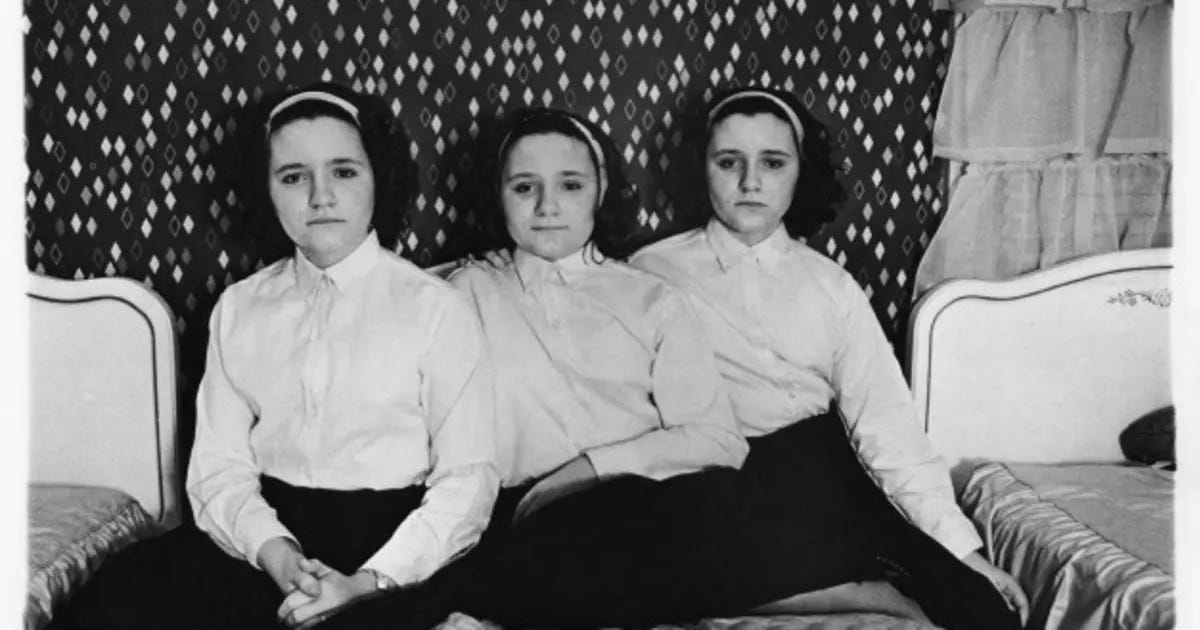
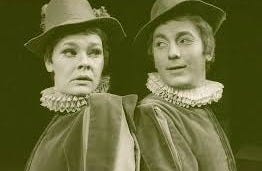
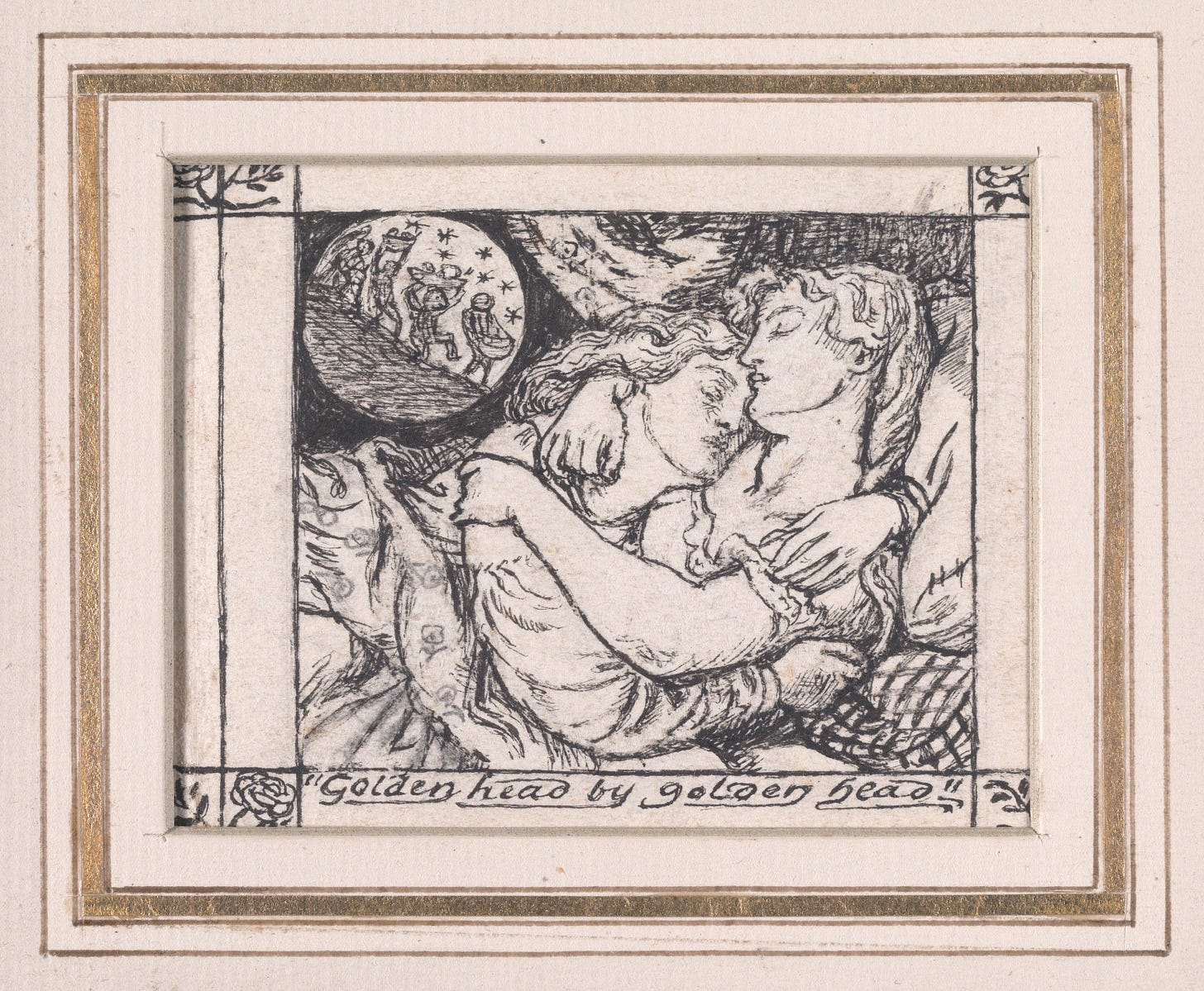
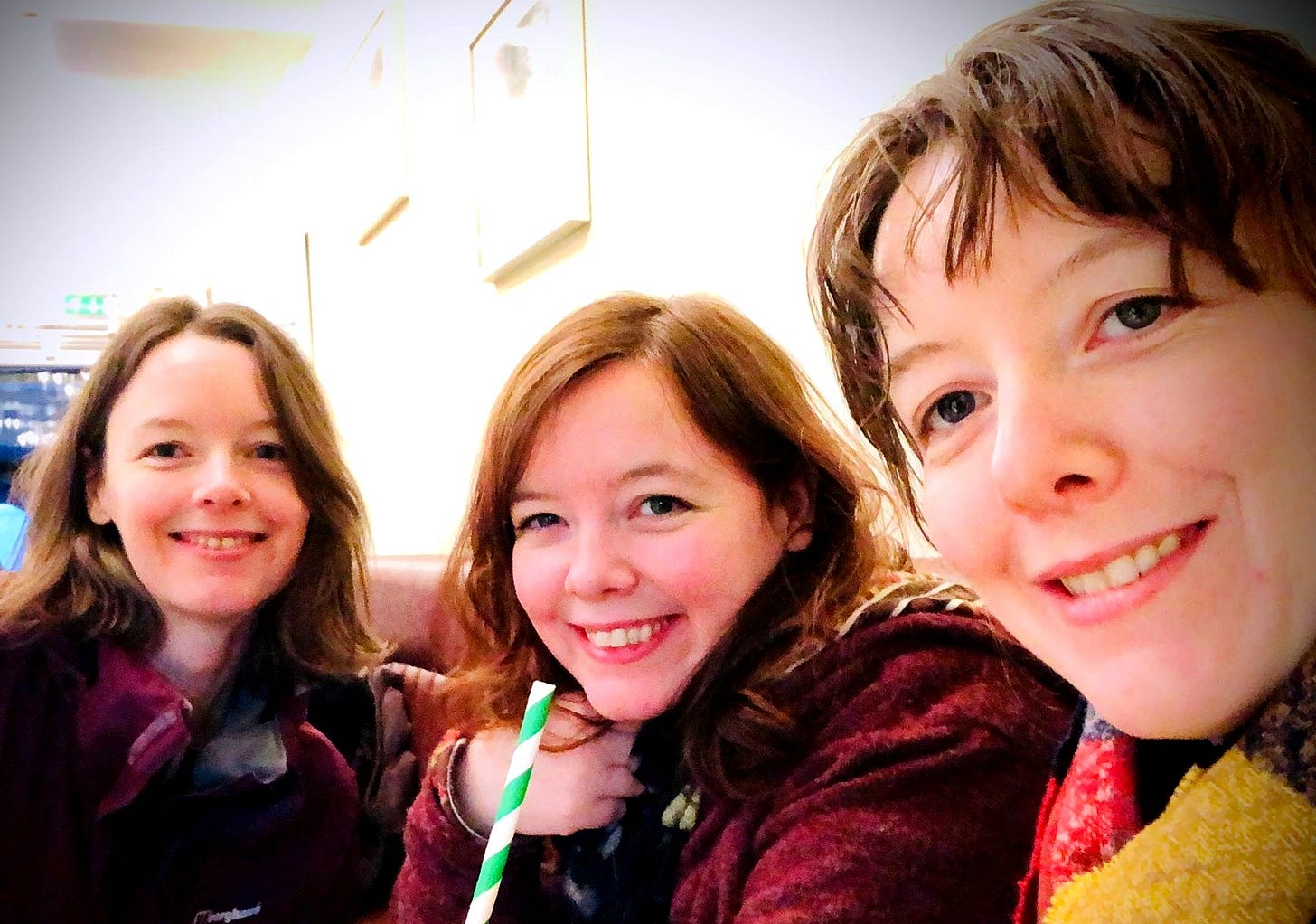
Another for your list: Peter Greenaway’s A ZED AND TWO NOUGHTS featuring twin zoologists (with the oh-did-you-really surname of Deuce) obsessed with natural decay, their personal experiments and fetishes, and a very large cast of snails. (Also, right-wing comedian Jim Davidson plays a zookeeper.) It is pretentious-arthouse-80s to the max and I think it’s still streaming on Mubi.
‘I remember my mother laughing at the birth scenes in which Phoebe looks, at most, mildly constipated.’ Heheh! I remember that too, Becky! Brilliant essay.